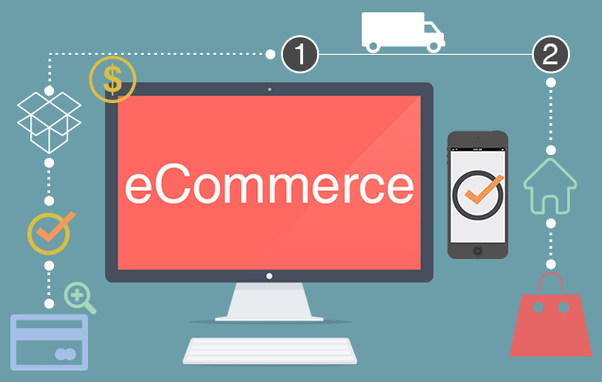10 E-commerce Business Ideas to Boost Your Online Sales
E-commerce has transformed the way we shop and do business. With the rise of digital platforms, entrepreneurs have countless opportunities to create successful online ventures. However, with the increasing competition, it’s essential to stand out and offer unique value propositions to boost your online sales. In this article, we’ll explore ten e-commerce business ideas that can help you elevate your online store and achieve greater sales.
1. Subscription Box Services
Overview
Subscription box services have gained immense popularity in recent years. They offer customers the convenience of receiving curated products regularly, often monthly, directly to their doorsteps. This model is particularly effective in creating a loyal customer base and generating recurring revenue.
Why It Works
- Recurring Revenue: Subscription models ensure a steady cash flow as customers pay upfront for the service.
- Customer Retention: By offering unique and personalized experiences, subscription boxes foster customer loyalty.
- Opportunity for Niche Markets: You can cater to specific interests, from gourmet snacks and beauty products to books and fitness gear.
Examples
- Birchbox: Offers beauty and grooming products.
- Blue Apron: Delivers meal kits with pre-measured ingredients and recipes.
Tips for Success
- Curate High-Quality Products: Ensure that the items in your box are of high quality and relevant to your target audience.
- Offer Personalization: Allow customers to customize their boxes based on their preferences.
- Leverage Data: Use customer feedback and purchasing data to refine and improve your offerings.

2. Dropshipping
Overview
Dropshipping is a retail fulfilment method where you sell products through your online store without handling inventory or shipping. When a customer places an order, the product is shipped directly from the supplier to the customer.
Why It Works
- Low Startup Costs: You don’t need to invest in inventory, making it a low-risk business model.
- Scalability: Easily expand your product range without worrying about storage.
- Flexibility: Operate from anywhere with an internet connection.
Examples
- Oberlo: A popular dropshipping platform integrated with Shopify.
- AliExpress: Offers a wide range of products suitable for dropshipping.
Tips for Success
- Choose Reliable Suppliers: Partner with suppliers who provide high-quality products and timely shipping.
- Focus on Niche Markets: Select a specific niche to differentiate your store from competitors.
- Optimize Your Store: Ensure your e-commerce site is user-friendly and optimized for conversions.
3. Print on Demand
Overview
Print on demand (POD) allows you to sell customized products like apparel, mugs, and phone cases without holding inventory. When a customer orders a product, it is printed and shipped directly to them.
Why It Works
- Customization: Offer unique, personalized items that appeal to individual tastes.
- No Inventory Costs: Products are created and shipped only when orders are placed.
- Creative Freedom: Experiment with different designs and products without the risk of unsold inventory.
Examples
- Redbubble: Allows artists to sell their designs on various products.
- Teespring: Specializes in custom apparel and accessories.
Tips for Success
- Design High-Quality Graphics: Invest in professional designs that resonate with your target audience.
- Market Effectively: Use social media and influencer marketing to promote your unique designs.
- Optimize for SEO: Ensure your product listings are optimized for search engines to attract organic traffic.
Improve Your Online Presence with Professional Consulting and Coaching Services
4. Digital Products
Overview
Selling digital products, such as e-books, online courses, and software, eliminates the need for physical inventory and shipping. This model can be highly profitable due to low overhead costs and high scalability.
Why It Works
- Low Overhead: No manufacturing or shipping costs involved.
- Global Reach: Digital products can be sold to customers worldwide.
- Scalability: Easily scale your business by creating additional products or expanding your offerings.
Examples
- Udemy: Offers a wide range of online courses on various subjects.
- Amazon Kindle Direct Publishing: Allows authors to publish and sell e-books.
Tips for Success
- Create High-Value Content: Ensure your digital products provide real value to your customers.
- Build an Email List: Use email marketing to promote your digital products and engage with your audience.
- Leverage Partnerships: Collaborate with influencers or industry experts to reach a broader audience.
5. Affiliate Marketing
Overview
Affiliate marketing involves promoting other companies’ products and earning a commission for each sale made through your referral. This model is popular among bloggers, influencers, and content creators.
Why It Works
- Low Risk: You don’t need to create or stock products.
- Multiple Income Streams: Promote products from various companies to diversify your income sources.
- Flexibility: Work from anywhere and promote products that align with your niche.
Examples
- Amazon Associates: An affiliate program that allows you to earn commissions by promoting Amazon products.
- ShareASale: A platform that connects affiliates with a variety of merchants.
Tips for Success
- Choose Relevant Products: Promote products that are relevant to your audience and align with your content.
- Create Engaging Content: Write reviews, tutorials, or comparison articles to drive traffic and conversions.
- Track Performance: Use analytics tools to monitor your performance and optimize your strategies.

6. Customizable Products
Overview
Offering customizable products allows customers to personalize items according to their preferences. This can range from engraved jewellery and monogrammed accessories to custom-built furniture.
Why It Works
- Personal Touch: Customized products provide a unique and personal experience for customers.
- Higher Margins: Personalized items often command higher prices.
- Customer Satisfaction: Increased satisfaction and loyalty from customers who receive products tailored to their needs.
Examples
- Etsy: A marketplace for handmade and customizable products.
- Zazzle: Offers a wide range of customizable items, from clothing to home decor.
Tips for Success
- Offer Variety: Provide multiple customization options to appeal to different tastes.
- Invest in Quality: Ensure that the customization process and final product meet high-quality standards.
- Promote Uniqueness: Highlight the personal touch and exclusivity of your products in your marketing efforts.
7. Niche Marketplaces
Overview
Creating a niche marketplace involves building a platform that connects buyers and sellers within a specific industry or interest area. This model focuses on catering to specialized audiences with unique needs.
Why It Works
- Targeted Audience: Attract a specific group of customers who are passionate about the niche.
- Less Competition: Compete in a less saturated market compared to broader marketplaces.
- Community Building: Foster a sense of community and engagement around the niche.
Examples
- Reverb: A marketplace for musical instruments and gear.
- The RealReal: Specializes in authenticated luxury consignment.
Tips for Success
- Understand Your Niche: Conduct thorough research to understand the needs and preferences of your target audience.
- Build a Community: Create forums or social media groups to engage with your users and build a loyal customer base.
- Offer Value-Added Services: Provide additional services, such as expert advice or product reviews, to enhance the customer experience.
Shop the Best Selection of Products at Our Niche Online Store
8. Social Commerce
Overview
Social commerce integrates e-commerce with social media platforms, allowing users to purchase products directly from social media channels. This approach leverages the power of social networks to drive sales and engagement.
Why It Works
- Direct Purchases: Enable users to buy products without leaving their social media apps.
- Enhanced Visibility: Leverage social media’s vast reach to promote your products and drive traffic.
- Influencer Partnerships: Collaborate with influencers to reach a larger audience and build credibility.
Examples
- Instagram Shopping: Allows businesses to tag products in posts and stories for easy purchase.
- Facebook Marketplace: A platform for buying and selling products within the Facebook ecosystem.
Tips for Success
- Optimize Your Profiles: Ensure your social media profiles are visually appealing and informative.
- Use Paid Advertising: Invest in social media ads to target specific demographics and drive traffic.
- Engage with Your Audience: Actively interact with followers to build relationships and encourage sales.

9. Online Market Research
Overview
Online market research involves using digital tools and platforms to gather data about consumer preferences, market trends, and competitive landscapes. This information can help you make informed decisions and optimize your e-commerce strategies.
Why It Works
- Informed Decisions: Make data-driven decisions to improve your product offerings and marketing strategies.
- Identify Opportunities: Discover emerging trends and unmet needs in the market.
- Measure Performance: Track and analyze your e-commerce performance to identify areas for improvement.
Examples
- SurveyMonkey: A platform for creating and conducting surveys to gather customer feedback.
- Google Trends: Provides insights into search trends and consumer interests.
Tips for Success
- Utilize Various Tools: Combine multiple research tools and techniques to gather comprehensive data.
- Analyze Competitors: Study your competitors to understand their strengths and weaknesses.
- Act on Insights: Implement changes based on your research findings to enhance your e-commerce business.
10. B2B E-Commerce
Overview
Business-to-business (B2B) e-commerce involves selling products or services from one business to another. This model is focused on transactions between companies rather than individual consumers.
Why It Works
- Large Transactions: B2B sales often involve larger order quantities and higher transaction values.
- Long-Term Relationships: Build long-term partnerships with other businesses for recurring revenue.
- Specialized Needs: Cater to specific industry requirements and offer tailored solutions.
Examples
- Alibaba: A global B2B marketplace connecting buyers and sellers across various industries.
- ThomasNet: A platform for industrial product sourcing and supplier discovery.
Tips for Success
- Understand B2B Needs: Tailor your offerings to address the specific needs and pain points of businesses.
- Build Strong Relationships: Focus on building and maintaining strong relationships with your business clients.
- Offer Value-Added Services: Provide additional services, such as bulk discounts or personalized support, to enhance your B2B offerings.
Boost Your Business with Our Premium Product Subscription Service
The e-commerce landscape is continually evolving, and the success of your online business relies on staying ahead of trends and meeting customer needs. By exploring and implementing these ten e-commerce business ideas, you can differentiate yourself in a competitive market and drive significant growth in your online sales. Whether you choose to dive into subscription boxes, drop shipping, or any other innovative model, the key is to deliver exceptional value and continuously adapt to changing market dynamics.




Post Comment